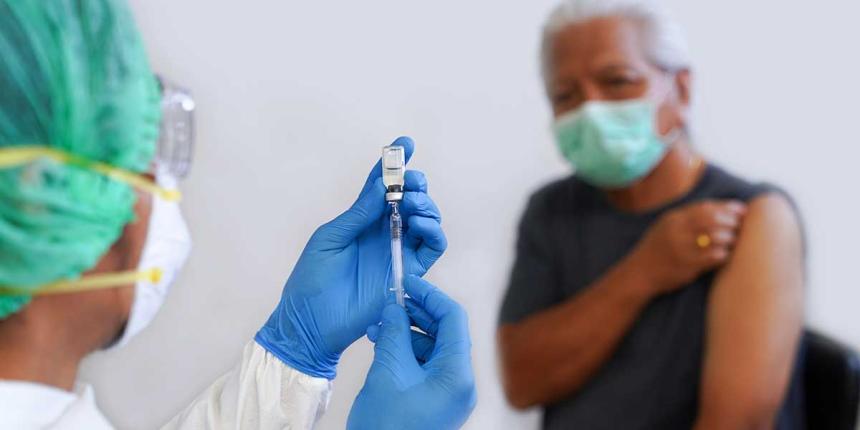Understanding the New COVID-19 Vaccines, Who Will Get Them First and When

This blog was updated Dec. 14, 2020.
There hasn’t been a lot of great news lately around the coronavirus. New infections are skyrocketing everywhere, and unfortunately, deaths from COVID-19 will follow. Don’t let down your guard.
But recently there were a few bright spots that could get us on a path back to normal. Of course, I’m talking about the two coronavirus vaccines that have cleared government approval or have nearly cleared it.
First, let me answer the obvious questions: Who will get the vaccine first? And when can I get it from my doctor?
The first vaccine, one from Pfizer, was officially approved for Emergency Use Authorization by the Food and Drug Administration Dec. 11. Experts expect Moderna's vaccine to be approved soon too. Once approved, the Centers for Disease Control and Prevention has recommended that employees and residents of long-term care facilities receive the vaccine first, along with healthcare workers on the frontlines. States will have to figure out how to deliver on these recommendations and define which healthcare workers qualify.
The states have also submitted draft distribution plans that include information about which providers will receive the vaccines. Most of those plans say early doses will likely go to health departments, hospitals and long-term care facilities that can administer the vaccines. Later, they expect to distribute the vaccine to primary care practices, but nothing is certain at this point. It could change; even the guidance issued by the CDC on who should get the vaccines first is considered interim.
Later, most states expect to distribute the vaccine to primary care practices, but nothing is certain at this point. It could change; even the guidance issued by the CDC on who should get the vaccines first is considered interim.
Vaccines should be distributed quickly in the first phase – in fact, the head of the federal government’s vaccine logistics program said in early December that 20 million Americans could be vaccinated by end of year if vaccines are approved, and that most Americans could have the vaccine by the middle of 2021. That’s a big relief.
So, how do these new vaccines differ from the vaccines you’re used to getting?
Traditional vaccines deliver either a dead or weakened form of a virus or part of a virus into your body. Your body sees this foreign invader, or antigen, and your immune system develops antibodies against it. Later, when your body encounters the real virus, your immune system recognizes it and attacks it before it can lead to an infection.
That’s how vaccines have worked for decades. But researchers are using a new technological approach to prime our immune systems. The two coronavirus vaccines currently in the news are called mRNA vaccines, and, if approved, they’ll be the first such vaccines to make it market.
How mRNA Vaccines Work
mRNA vaccines don’t deliver the antigen to the body. Instead, they carry genetic instructions that teach your cells how to make the antigen. This more closely mimics a natural infection, which may ultimately make them more effective.
mRNA is a molecule that tells cells what to build. In this case, the mRNA vaccine carries instructions to create a type of protein that is part of sars-cov-2, the coronavirus that causes COVID-19. The immune system then recognizes that protein or antigen, and when the real thing enters the body, it’s prepared to fight it.
Why did scientists working on these vaccines take this approach versus a traditional route? Even though there are no mRNA vaccines on the market right now, researchers have been studying the method since the early 1990s. They’ve had setbacks – especially in getting the vaccines to work in humans. Technological advancements have been key. This kind of vaccine wouldn’t have been achievable 20 or 30 years ago.
In traditional vaccines, lab researchers have to grow viruses and then inactivate either the virus or its protein. That’s one of the reasons it can take years for a vaccine to be developed.
But mRNA vaccines are quicker because scientists can create the protein sequence in the lab in hours or days – not months or years. And as technology has improved, so has the speed. For example, scientists decoded the genome for this coronavirus in early January – it took researchers six to eight years to decode the human genome in the 1990s. The fast decoding enabled researchers to create several mRNA candidate vaccines and begin testing them in the lab and in animals before the coronavirus became a worldwide pandemic. In fact, Moderna went from creation to testing in humans in just 63 days.
(To understand more fully how these vaccines work, watch our member-exclusive webinar with one of America’s top virus scientists, Erica Saphire.)
But are they safe?
So far, participants in Moderna and Pfizer vaccine trials have not reported any serious adverse events, although only data from earlier phases have been published. There are more than 40,000 participants in Pfizer’s phase 3 trial and 30,000 in Moderna’s. Data from this later phase is still being analyzed by independent safety and review panels. The FDA reviewed data before approving Pfizer's vaccine and is looking at Moderna’s data.
While the new vaccines were created with great speed, they have followed traditional testing protocols, including multiple trials in humans with large scale testing in phase 3. They have taken a different approach at some turns – combining phase 1 and 2 trials, for example, but researchers say this doesn’t make them less safe. The biggest difference is that both Pfizer and Moderna applied for Emergency Use Authorization from the FDA instead of traditional approval, which could take months or years. Pfizer has been given this authorization; Moderna is awaiting it. Even with this process, the FDA reviews the safety and testing data of the candidate vaccines and monitors results for any adverse events or problems.
These new vaccines do have some distribution and storage challenges, especially with Pfizer’s mRNA vaccine. It must be kept at incredibly low temperatures (minus 70 degrees Celsius) or it can fall apart. Hospital systems and health departments who have the ability to keep the vaccine in deep freeze will likely be the first places to receive the vaccine.
Moderna’s mRNA vaccine is more stable – it can be kept for up to six months at minus 20 degrees Celsius, a similar temperature to a traditional freezer. The company announced in mid-November that its vaccine can also last for 30 days at 2 to 8 degrees Celsius, or a similar temperature to a normal refrigerator. The shelf life numbers are just an estimate for now – the vaccines may actually last longer, but it will take time for manufacturers to test their effectiveness.
Both mRNA vaccines require two doses, three to four weeks apart, another logistical challenge for public health officials.
What about other vaccines?
There are other vaccines. In fact, there are 57 in human trials and another 87 in lab testing.
Several of my MDVIP colleagues and I are involved in a trial by AstraZeneca and Oxford University. AstraZeneca recently reported an efficacy rate of 70 percent and as high as 90 percent in some groups of recipients. The vaccine is reportedly already being reviewed by British regulators (who have approved Pfizer’s vaccine).
It’s different from the mRNA vaccine, but the approach is new, too. The AstraZeneca vaccine uses another virus, genetically modified by scientists to mimic the virus that causes COVID-19. The body’s immune system recognizes the invader and develops the tools to fight off the real virus later.
Another promising candidate by Johnson & Johnson uses an inactivated and harmless common cold virus to deliver a coronavirus protein into host cells. There, the protein gets the attention of the immune system, which fights it and develops a response against future coronavirus infections. This vaccine only requires one dose, although J&J is now testing a two-shot approach.
Why are these vaccines important if Moderna’s and Pfizer’s are close to being approved? Public health officials think multiple vaccines will ultimately be needed to end the pandemic.
This is all promising news – even if vaccinations are still months away for the average American. We’ll keep sharing these developments, and in the meantime, keep your risk for catching the coronavirus lower by avoiding gatherings, wearing facemasks and washing your hands!


